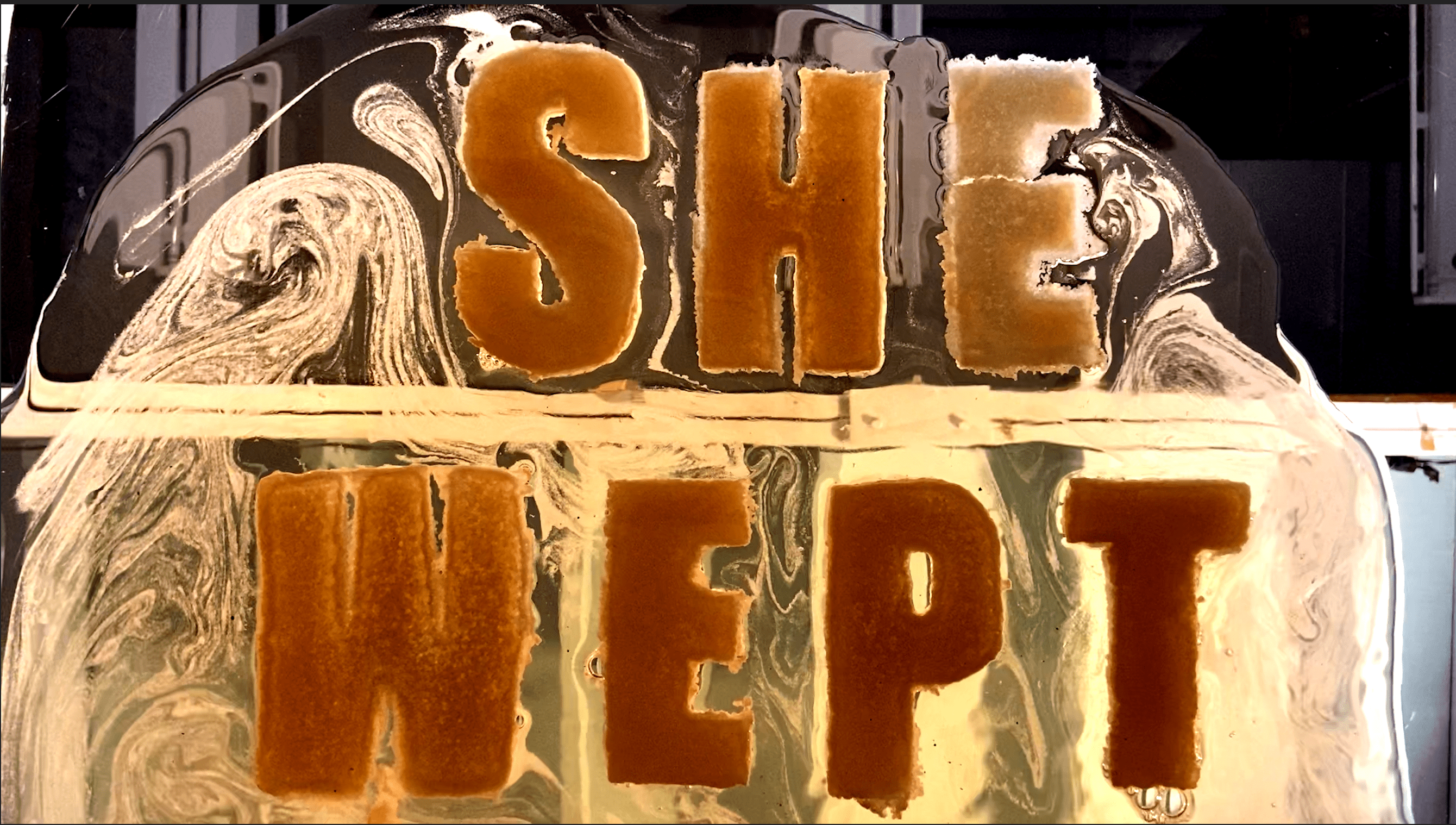
Schmiegelow laid salt and dripping sugar-made letters on Plexiglas and poured tea over them to compose “She wept.” Credit: Courtesy of Maggy Schmiegelow
In the brand-new exhibition “Proximity,” various artistic mediums and narratives related to concepts of “labor, tenderness, ritual, perception, and possession” are on display.
The artists, all third-year Master of Fine Arts students on the verge of graduating, composed their art over the past year in their own studios. Self-appointed committees inside the Department of Art provided feedback to the 13 students throughout the process. The exhibition is on view now until March 19 at Urban Arts Space and a virtual walkthrough will be held on March 6.
Maggie Schmiegelow, a third-year MFA student in sculpture, said for the past two years she handled a lot of edible material for the sake of art. She works with caramel, which she said is almost similar to glass but less solid and kind of sweaty because it absorbs moisture from the air. The amber color and especially its consistency — fluctuating easily between liquid and solid states — fascinates her, Schmiegelow said.
“I’m really interested in that material shift, all of my work sort of embodies moments where materials are shifting or conditions are shifting, where there’s some kind of transition or threshold has been crossed,” Schmiegelow said.
Salt is another cornerstone of her art. Schmiegelow said her use of this medium is shaped by the biblical story of Lot — a woman who disobeyed God by watching the destruction of Sodom and was punished by being turned into a pillar of salt. Schmiegelow said this material transformation, however, is synonymous with her independence.
“She doesn’t get named in proximity to her husband and never as an independent means until she becomes salt. And then she gained the kind of materiality that allows her to be independent, and be referenced for herself, not for someone else,” Schmiegelow said.
She said her piece “She wept” is a reference to the Bible verse “Jesus wept,” famous for being the shortest verse in several versions of the Bible. Schmiegelow said this quote embodies the bodily experience that Jesus had. She said she replaced Jesus with the pronoun “she,” thinking about all the unnamed women in the Bible and the resulting lack of identification.
Having grown up in a Lutheran household and having embodied certain ideals about the female body, Schmiegelow said she uses salt and caramel as surrogate bodies that can experience proper tensions and pleasures.
“When I think about proximity, I’m thinking about both the material’s proximity to myself to my own experience and how to bridge that gap and get closer to sensation,” Schmiegelow said.
Kristen Phipps, a third-year MFA student in painting, contributed to the show with large-scale paintings on canvas. Phipps said her pieces deal with questions about access and material exploration.
“I’m curious how much of an object has to be seen for it to be a recognizable object and how mediums interact with each other,” Phipps said.
Phipps said she plays with saturation, brightness and color composition to make the viewer feel that boundaries have been cluttered or broken. She said that’s the way she interpreted the notion of proximity, and she wanted to deal with the pandemic situation, where distance is the key word.
“I like to make a junk drawer metaphor, like in the kitchen home where you have that one drawer that has everything that doesn’t have a categorization; that’s what the painting feels like to me,” Phipps said.


